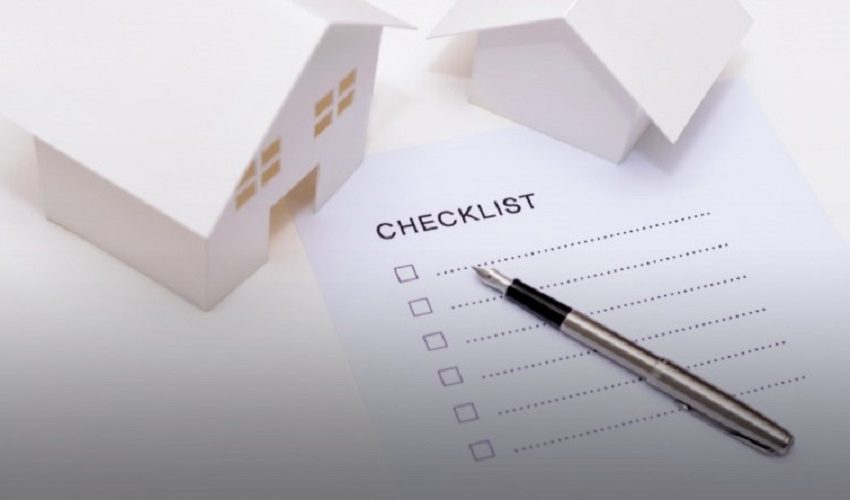
Are you on the brink of purchasing a home in the beautiful state of California? Congratulations! The Golden State offers stunning landscapes and vibrant cities, making it an attractive place to settle down. However, before you sign those closing papers, there’s a crucial step you should never skip – the California home inspection.
This article serves as your ultimate guide to the California home inspection checklist. We’ll delve deep into every aspect of this process, leaving no stone unturned. Whether you’re a first-time buyer or a seasoned investor, this checklist will ensure that your property investment is secure and sound.
I. Introduction
Welcome to the World of Home Inspections
Buying a home is a significant investment, and you want to be sure it’s a wise one. This checklist will empower you with knowledge, so you can confidently assess the condition of your prospective property. Let’s begin by exploring what a home inspection is and why it’s vital.
II. What is a Home Inspection?
Understanding the Basics
A home inspection is a comprehensive examination of a property’s condition. It’s like a thorough health check-up for your potential home. A certified home inspector assesses various aspects of the property, from its structure and systems to safety and functionality.
III. Why is a Home Inspection Necessary?
The Importance of Due Diligence
Now, you might wonder if a home inspection is truly necessary. The answer is a resounding “yes.” Here’s why:
- Identify Issues: A home inspection uncovers hidden issues that may not be visible during a casual viewing.
- Negotiating Power: If problems are discovered, you can negotiate with the seller for repairs or a lower price.
- Safety Assurance: Ensures your future home is safe for you and your family.
- Long-term Savings: Fixing problems early can save you thousands in future repair costs.
IV. Preparing for Your California Home Inspection
Getting Ready for the Big Day
Before the inspector arrives, there are a few things you should do to ensure a smooth inspection process:
- Clean and Clear: Ensure easy access to all areas of the property. Remove clutter and personal items.
- Documentation: Gather all documents related to repairs and renovations.
- Utilities: Ensure all utilities are turned on for the inspection, including water, gas, and electricity.
- Accompany the Inspector: While not mandatory, it’s a good idea to be present during the inspection. This allows you to ask questions and gain a better understanding of your future home.
V. The California Home Inspection Checklist
Now, let’s dive into the heart of the matter: the checklist itself. Here, we’ll provide a detailed breakdown of what a standard California home inspection covers.
A. Structural Components
The Backbone of Your Home
- Foundation: Inspectors check for cracks, shifts, or other signs of foundation issues.
- Roof: The condition of the roof, including missing shingles or leaks, is thoroughly examined.
- Walls and Ceilings: Look out for cracks, water stains, or signs of structural damage.
- Floors: Check for unevenness, creaks, or damage to the flooring.
B. Exterior Inspection
Curb Appeal and Beyond
- Siding: Inspect the condition of the siding material, such as wood, vinyl, or stucco.
- Windows and Doors: Ensure all windows and doors open and close correctly, checking for drafts or damage.
- Landscaping: Evaluate the grading of the yard to prevent water from flowing towards the house.
C. Roof and Attic
Protection from Above
- Roofing Material: Assess the type and condition of the roofing material.
- Attic: Inspect insulation, ventilation, and the overall condition of the attic.
D. Plumbing System
Keeping Things Flowing Smoothly
- Pipes: Check for leaks, corrosion, or damage in plumbing pipes.
- Drains: Ensure all drains are working correctly, and there are no blockages.
E. Electrical System
Powering Up Safely
- Wiring: Inspect the electrical wiring for safety and compliance with local codes.
- Outlets and Switches: Ensure all outlets and switches are functional.
- Circuit Breaker: Check the condition of the circuit breaker and panel.
F. Heating, Ventilation, and Air Conditioning (HVAC)
Comfort and Air Quality
- Heating System: Inspect the heating system, including the furnace and ductwork.
- Cooling System: Assess the air conditioning system for functionality.
G. Appliances
Modern Conveniences
- Kitchen Appliances: Ensure that appliances like the stove, dishwasher, and refrigerator are in working order.
- Laundry Appliances: Check the condition of the washer and dryer.
H. Safety Features
Peace of Mind
- Smoke and Carbon Monoxide Detectors: Verify the presence and functionality of these life-saving devices.
- Fire Extinguishers: Ensure fire extinguishers are accessible and have not expired.
I. Pest Inspection
Unwanted Guests
- Termites and Pests: A pest inspection checks for infestations that can damage your home.
VI. Frequently Asked Questions (FAQs)
Q: How long does a typical California home inspection take?
A: On average, a home inspection in California takes about 2 to 4 hours, depending on the property’s size and condition.
Q: Can I attend the inspection?
A: Yes, you can and should attend the inspection. It’s an excellent opportunity to learn about your future home and ask questions.
Q: What if the inspection reveals significant issues?
A: If significant issues are found, you have several options. You can negotiate repairs with the seller, request a lower price, or choose to walk away from the deal.
Q: How much does a California home inspection cost?
A: The cost of a home inspection varies but typically ranges from $300 to $600, depending on the property’s size and location.
Q: Are there any specific regulations for home inspections in California?
A: Yes, California has regulations governing home inspections. Inspectors must be licensed and follow specific standards of practice.
Q: When should I schedule a home inspection?
A: It’s best to schedule a home inspection as soon as your offer is accepted. This gives you ample time to address any issues before closing.
VII. Conclusion
In Closing
The cheap home inspections is your roadmap to a secure and confident home purchase. By following this guide and conducting a thorough inspection, you’ll ensure that your new California dream home is everything you’ve imagined.
Remember, a home inspection is not a deal-breaker; it’s a deal-maker. It equips you with the knowledge needed to make informed decisions and negotiate effectively

